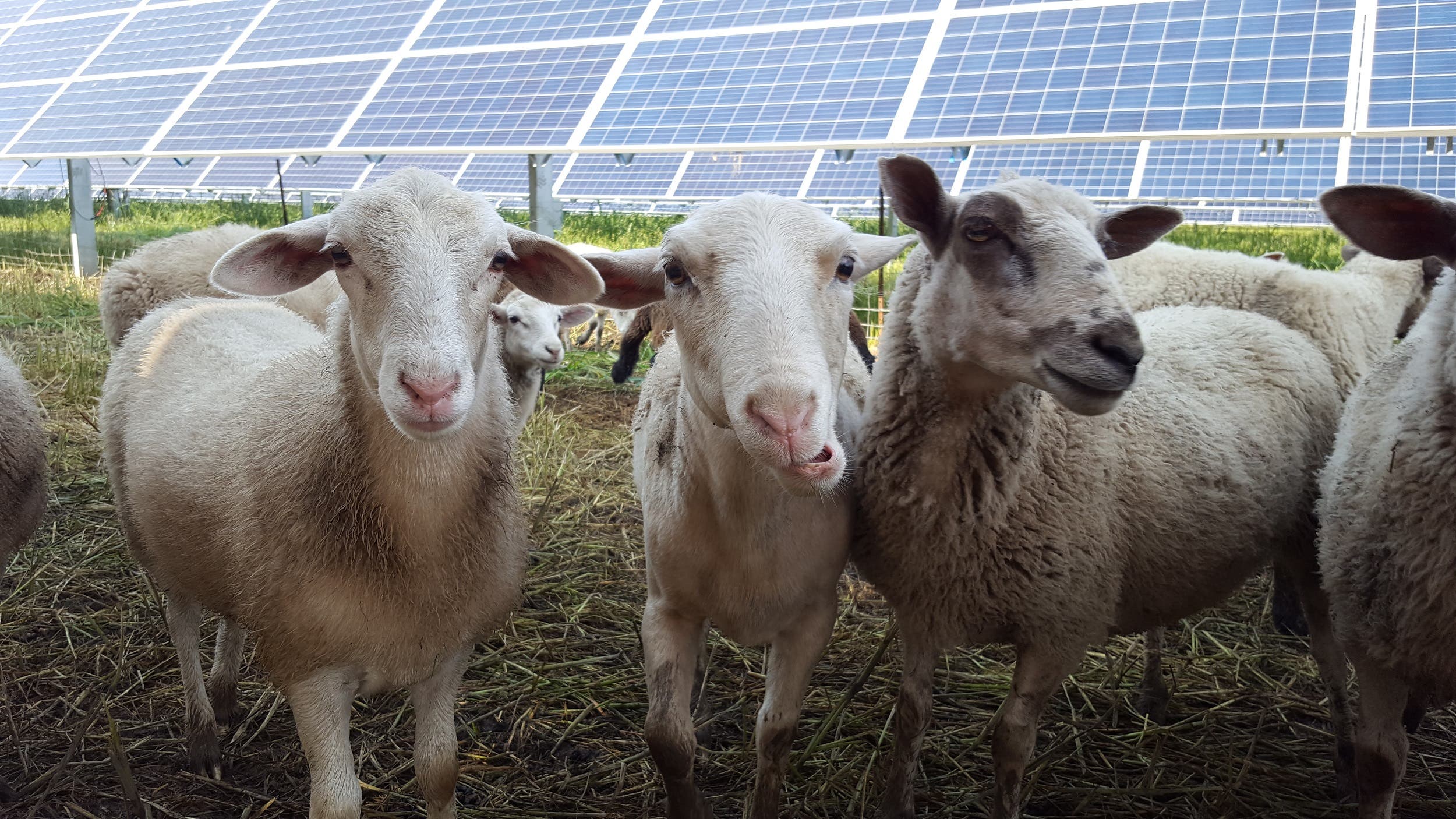November 20th, 2020 by Steve Hanley
Enel Green Power is a subsidiary of Enel, the Italian utility company. Established in 2008, it is headquartered in Rome but operates in 27 countries located on 5 continents, providing electricity generated by solar, wind, geothermal, and biomass sources to its customers. The company operates three solar power plants in the United States — one in Stillwater, Nevada; another in Sheldon Springs, Vermont; and Aurora Solar in Minnesota.

Enel Green Power’s Aurora Solar Farm. Used with permission.
Often, solar installations compete with agriculture for arable land, which has led many researchers and energy developers to seek ways to combine the two so land can remain in productive use while also providing solar energy. Germany’s Frauhofer ISE has been a leader in this area and determined that combining solar and agriculture can increase the productivity of arable land by up to 60%.
In an e-mail to CleanTechnica, Marcus Krembs, head of sustainability for Enel North America, says, “Solar power development is on track to occupy nearly 2 million acres in the United States by 2030. With land utilization remaining a key consideration for developers, the solar power industry must continue to push for innovation and land stewardship practices that ensures a mutually beneficial relationship between solar farms and the land on which they are built.
“Enel Green Power is championing this movement through the adoption of dual-use solar practices — the utilization of land for both agricultural or ecological benefits and solar power. To achieve our goal of driving the energy transition with truly sustainable, clean energy, we are integrating many practices such as establishing large-scale habitats for pollinator insect species to boost crop yields and hosting sheep grazing to reduce maintenance costs and increase solar competitiveness, benefiting both local ecosystems and farmers. Enel Green Power views innovation and the driver of sustainability, and dual-use solar practices reinforces our company commitment to empower sustainable progress.”
The Aurora solar power plant in Minnesota consists of 16 different sites which combined produce 150 MWdc of electricity. On an annual basis, they generate 210 million kWh of electricity — enough to meet the energy needs of 17,000 average US households while keeping 150,000 tons of carbon dioxide emissions out of the atmosphere.
“Projects like this show that we can provide renewable energy even more affordably, with more benefits so that the consumers, the buyers, get really excited about the clean energy and the conservation and the agriculture happening all in one place. We can have clean energy and we can have these beautiful flowering landscapes. That kind of innovation, that’s connected to nature, that’s connected to agriculture and that’s connected to community is tremendously exciting.”
At the Aurora facility, Enel has partnered with Bare Honey, which uses solar power exclusively in its operations, to raise awareness about the decline in the honeybee population. It has planted native pollinator vegetation throughout the Aurora facility that provides a natural habitat for bees and butterflies underneath operating solar panels.
In addition, Enel Green Power has developed a conservation grazing plan in cooperation with Minnesota Native Landscapes. Each solar instalation comes with its own landscape conditions and ecological goals in terms of regenerative land management. The conservation grazing plan offers an integrated and holistic approach that is in line with these goals and involves determining the appropriate species and class of livestock needed to execute it.
At the Aurora solar farm, sheep are used in place of traditional lawnmowers. Not only does the company not have to worry about complications with heavy machinery damaging the land or solar equipment, the sheep enhance vegetation by acting as pollinators, carrying and spreading seeds from plants around the landscape as move and graze under the solar panels.
Taking a further step forward in the agrophotovoltaics, Enel Green Power plans to leverage the lessons learned from its environmentally friendly sites to transform a portion of its newest solar installation in Texas to pilot an agricultural farm. On a five acre portion of the site leased from a Texas based organic farmer, the company plans to install a small solar facility in a way that accommodates crop and produce growth typical of the region.
There has been opposition to solar installations from some farmers, particularly in Iowa where agriculture is one of the state’s largest industries. Efforts from companies like Enel Green Power show how solar and farming can co-exist and support each other while helping to bring more renewable energy to America.
Appreciate CleanTechnica’s originality? Consider becoming a CleanTechnica member, supporter, or ambassador — or a patron on Patreon.
Sign up for our free daily newsletter or weekly newsletter to never miss a story.
Have a tip for CleanTechnica, want to advertise, or want to suggest a guest for our CleanTech Talk podcast? Contact us here.

